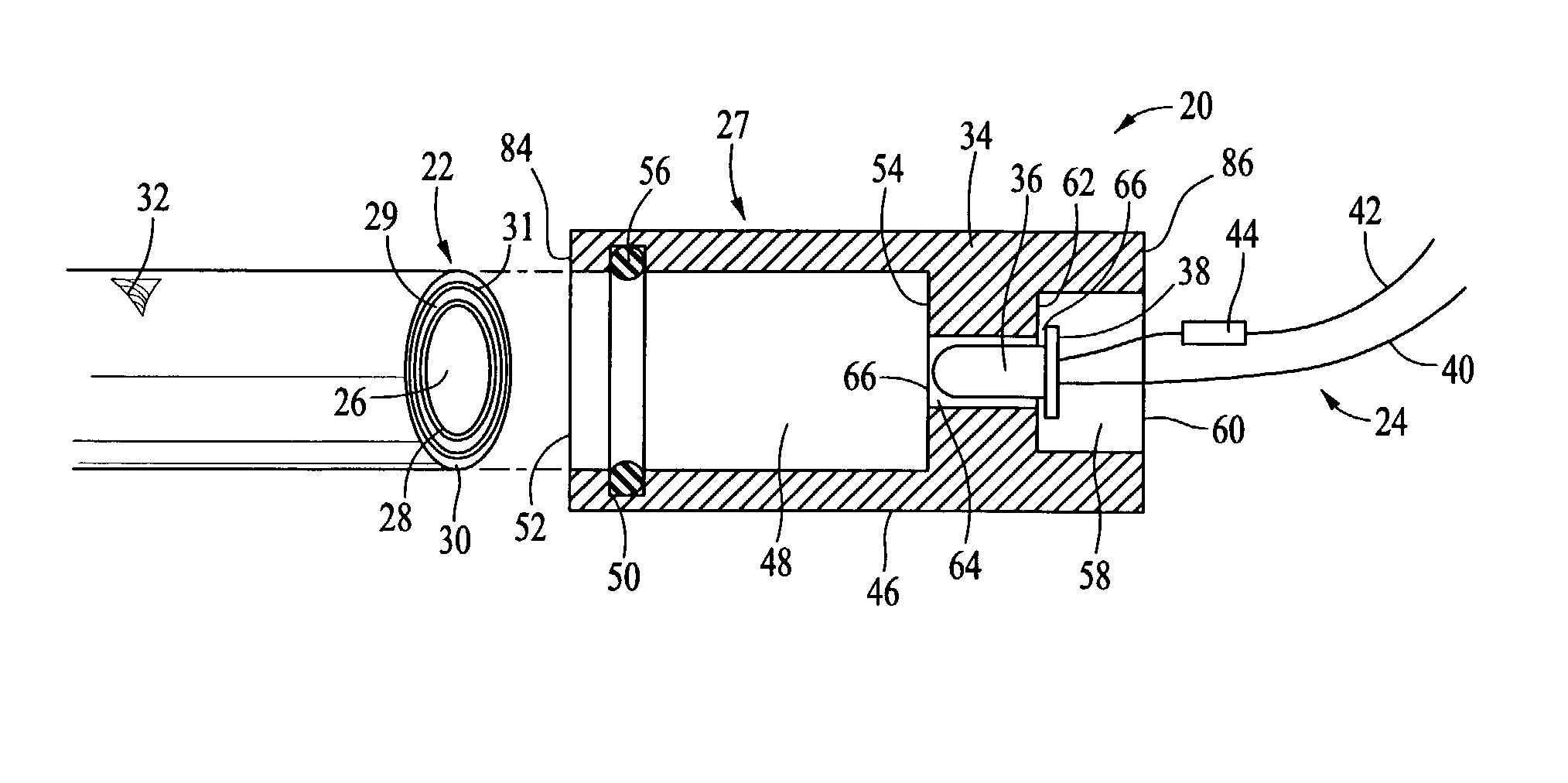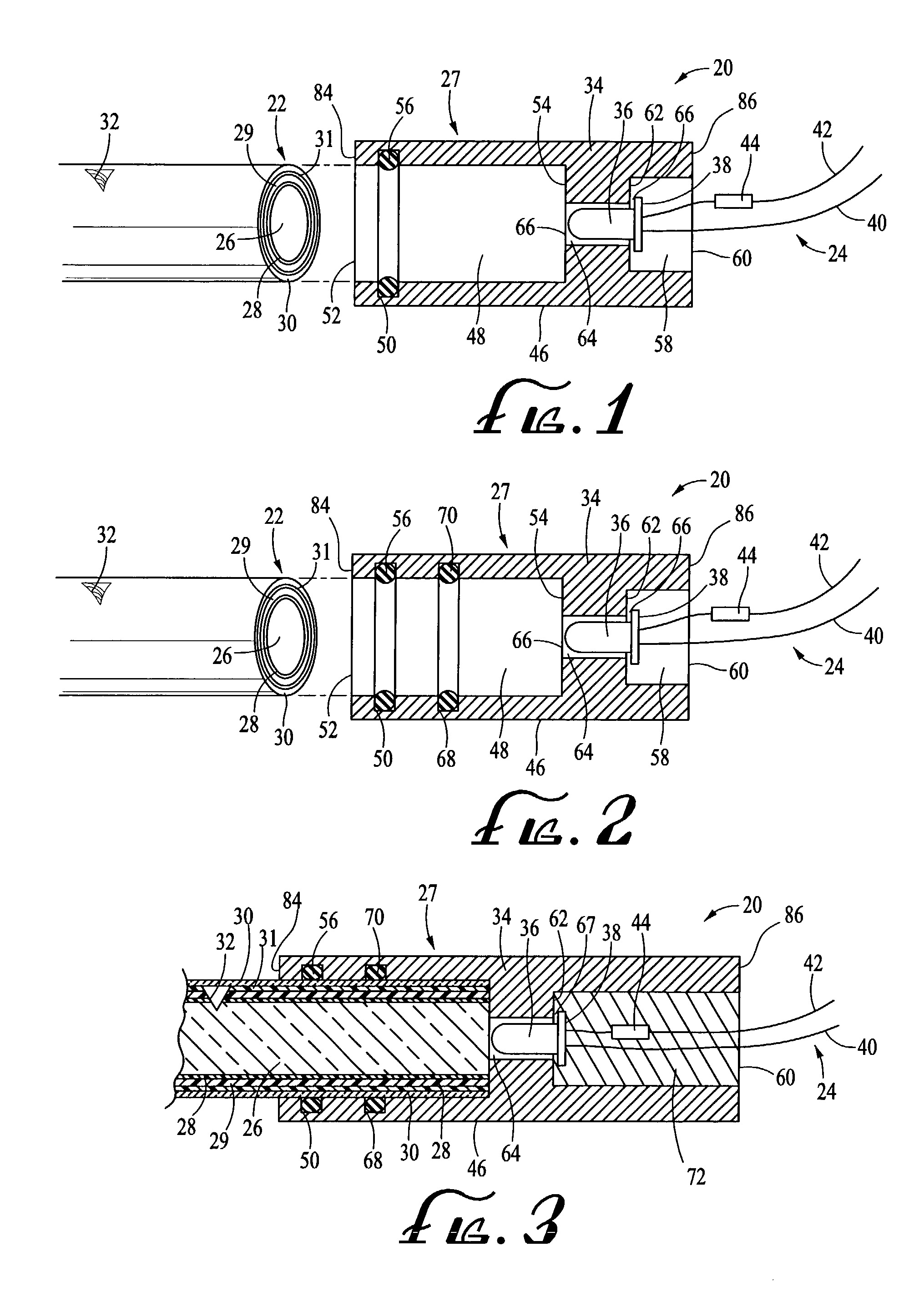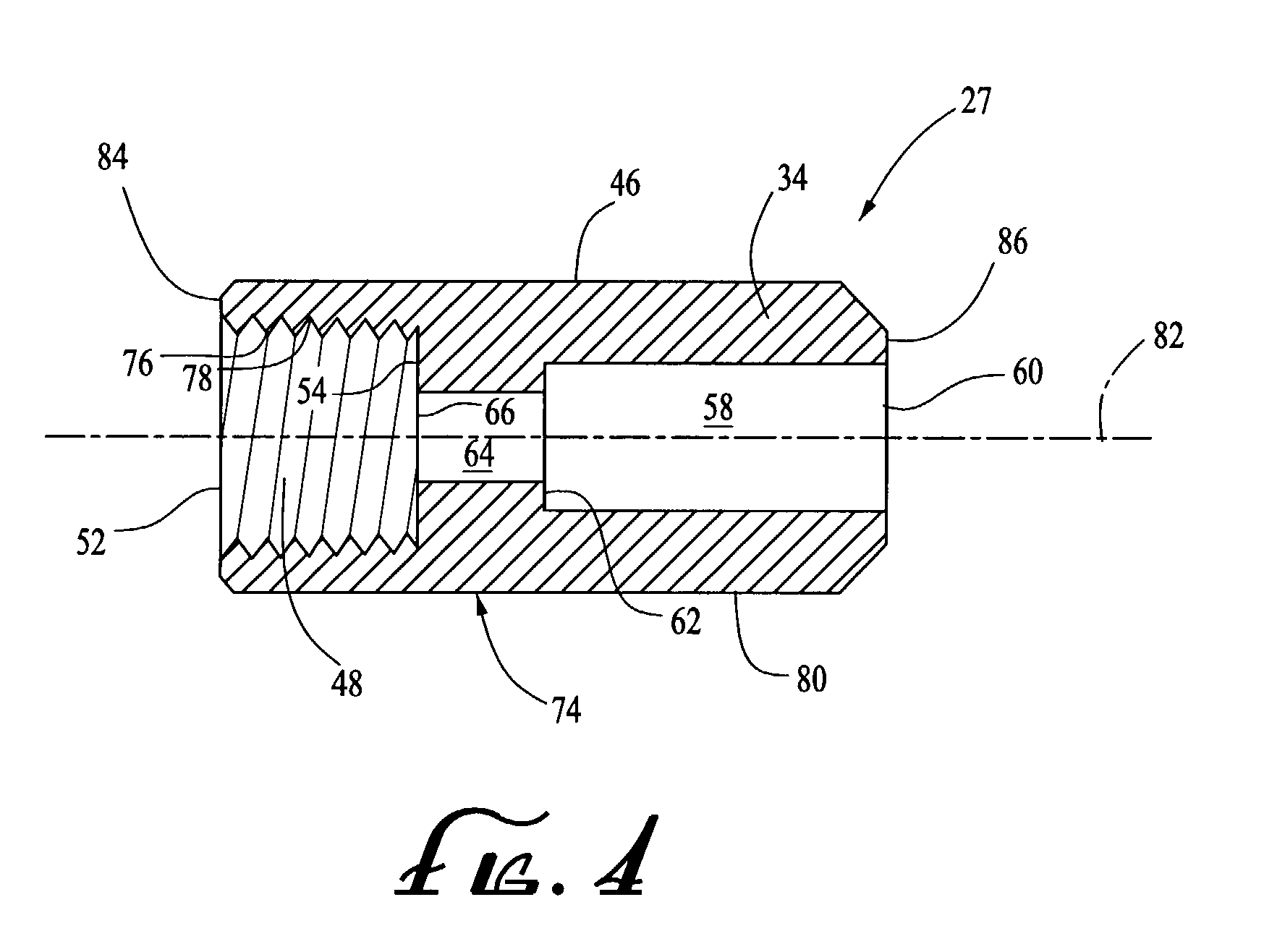Fiber optic LED light
a technology of led light and fiber optics, applied in the direction of instruments, thin material processing, paper and paper, etc., can solve the problems of lack of water resistance, lack of secure retention, insufficient structure of led or led's connected to light guides, etc., to reduce, minimize and/or essentially eliminate the above-mentioned inadequacies
- Summary
- Abstract
- Description
- Claims
- Application Information
AI Technical Summary
Benefits of technology
Problems solved by technology
Method used
Image
Examples
example 2
[0028] In a second example, a second solid cylindrical aluminum bar was machined into a connector, as shown in FIG. 1, except that two indents, or O-ring channels were machined into the bar, as illustrated in FIG. 2. All components of the Example 2 embodiment were the same as described above with respect to Example 1, except for the double O-ring structure and that the LED assembly was not potted into chamber 58. The fiber optic 22 was inserted into the chamber 48, butted up against end wall 54 and thereafter pulled and manipulated to determine its relative stability. When pulled and so manipulated, the light guide 22 was substantially more firmly secured within the cavity 48 than was the light guide secured by the single O-ring structure of Example 1. The double O-ring configuration of the present invention is preferable compared to the single O-ring embodiment.
example 3
[0029] In a third example, a hot bonding material, obtained from R. S. Hughes Company was used as the potting material. The hot melt bonding material, Hughes part number 3747PG is sold as its "3M Jet-Melt.TM." bonding material. While both the silicon as well as the hot melt bonding material were useful for the present invention, the preferred potting material is the hot melt bonding material sold as "3M Jet-Melt".
example 4 , 5
EXAMPLE 4, 5, AND 6
[0030] As Examples 4, 5, and 6, ABS, PVC and polycarbonate plastic materials are believed to be useful in the construction of the connector used in the present invention. This belief is based on well known properties for those materials in that they possess sufficient structural rigidity to function as a supporting connector, have the ability to dissipate heat sufficiently, and can be manufactured into appropriate shapes in a cost-effective manner.
PUM
| Property | Measurement | Unit |
|---|---|---|
| length | aaaaa | aaaaa |
| outer diameter | aaaaa | aaaaa |
| inner diameter | aaaaa | aaaaa |
Abstract
Description
Claims
Application Information
 Login to View More
Login to View More - R&D
- Intellectual Property
- Life Sciences
- Materials
- Tech Scout
- Unparalleled Data Quality
- Higher Quality Content
- 60% Fewer Hallucinations
Browse by: Latest US Patents, China's latest patents, Technical Efficacy Thesaurus, Application Domain, Technology Topic, Popular Technical Reports.
© 2025 PatSnap. All rights reserved.Legal|Privacy policy|Modern Slavery Act Transparency Statement|Sitemap|About US| Contact US: help@patsnap.com



